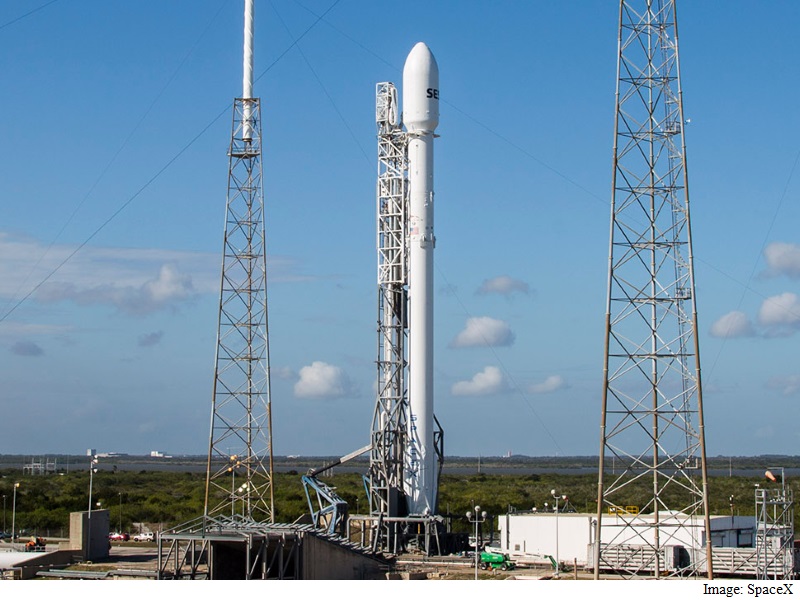- Home
- Science
- Science News
- SpaceX Warns of Failure in Wednesday's Falcon 9 Rocket Landing
SpaceX Warns of Failure in Wednesday's Falcon 9 Rocket Landing

A 90-minute window for liftoff of the unmanned rocket opens on February 24 at 6:46 pm (2346 GMT) from Cape Canaveral, Florida, SpaceX said on its website. In case of bad weather, another opportunity arises Thursday around the same time.
The goal of the mission is to propel a Boeing-built SES-9 satellite delivering television and high-speed broadband to the Asia-Pacific region to a geostationary transfer orbit (GTO) far above the equator.
Then, SpaceX will try again to land the tall part of its rocket, known as the first stage, on a floating platform in the Atlantic Ocean.
"Following stage separation, the first stage of the Falcon 9 will attempt an experimental landing on the 'Of Course I Still Love You' droneship," SpaceX said.
"Given this mission's unique GTO profile, a successful landing is not expected."
SpaceX successfully landed its Falcon 9 on solid ground last year, but numerous attempts at landing on barges in the Atlantic and Pacific have failed.
Headed by Internet entrepreneur Elon Musk, who also runs Tesla Motors, the company is working to hone the techniques of recycling rockets, instead of jettisoning their costly components after each launch.
The aim is to make launches more affordable and environmentally friendly.
The launch is commissioned by SES, a Luxembourg-based company that specializes in worldwide satellite communications.
For the latest tech news and reviews, follow Gadgets 360 on X, Facebook, WhatsApp, Threads and Google News. For the latest videos on gadgets and tech, subscribe to our YouTube channel. If you want to know everything about top influencers, follow our in-house Who'sThat360 on Instagram and YouTube.
Related Stories
- Samsung Galaxy Unpacked 2025
- ChatGPT
- Redmi Note 14 Pro+
- iPhone 16
- Apple Vision Pro
- Oneplus 12
- OnePlus Nord CE 3 Lite 5G
- iPhone 13
- Xiaomi 14 Pro
- Oppo Find N3
- Tecno Spark Go (2023)
- Realme V30
- Best Phones Under 25000
- Samsung Galaxy S24 Series
- Cryptocurrency
- iQoo 12
- Samsung Galaxy S24 Ultra
- Giottus
- Samsung Galaxy Z Flip 5
- Apple 'Scary Fast'
- Housefull 5
- GoPro Hero 12 Black Review
- Invincible Season 2
- JioGlass
- HD Ready TV
- Laptop Under 50000
- Smartwatch Under 10000
- Latest Mobile Phones
- Compare Phones
- Moto G15 Power
- Moto G15
- Realme 14x 5G
- Poco M7 Pro 5G
- Poco C75 5G
- Vivo Y300 (China)
- HMD Arc
- Lava Blaze Duo 5G
- Asus Zenbook S 14
- MacBook Pro 16-inch (M4 Max, 2024)
- Honor Pad V9
- Tecno Megapad 11
- Redmi Watch 5
- Huawei Watch Ultimate Design
- Sony 65 Inches Ultra HD (4K) LED Smart TV (KD-65X74L)
- TCL 55 Inches Ultra HD (4K) LED Smart TV (55C61B)
- Sony PlayStation 5 Pro
- Sony PlayStation 5 Slim Digital Edition
- Blue Star 1.5 Ton 3 Star Inverter Split AC (IC318DNUHC)
- Blue Star 1.5 Ton 3 Star Inverter Split AC (IA318VKU)

















